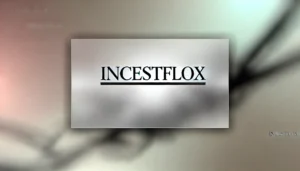
What is Incestflox?
Incestflox is a term that has recently gained traction in societal discussions, especially within the realms of psychology and cultural studies. At its core, it combines two significant components: ‘incest,’ referring to sexual relations between closely related individuals, and ‘flox,’ a suffix that denotes a blending or complex interplay of ideas. This neologism is vital for encapsulating the intricate dynamics that surround the topic of incest and its associated implications in contemporary society.
The origins of incestflox can be traced back to changing perceptions regarding familial relationships and societal boundaries. Historically, incest has been viewed as a taboo subject across various cultures, often leading to legal and moral repercussions for those involved. However, with the progression of cultural norms and a more open discourse surrounding sexuality and relationships, there has been a shift towards understanding the complexities of such interactions, thus giving rise to the concept of incestflox.
In society, incestflox is often approached with a lens of both fascination and repulsion. It raises critical questions about consent, power dynamics, and the impact of familial structures on individual identity and behavior. This construct not only examines the immediate implications of incestuous relationships but also delves into the societal frameworks that allow such dynamics to evolve. The relevance of incestflox is underscored by its recognition in various media, literature, and academic discussions, emphasizing its role in reflecting and shaping societal attitudes towards family, intimacy, and belonging.
Understanding incestflox is essential for comprehending the broader cultural and psychological implications of familial interactions. As discussions around this term continue to evolve, it invites further inquiry into the human condition and the relationships that define our lives.
The Psychological and Social Implications of Incestflox
Incestflox presents complex psychological challenges for individuals who find themselves entangled in such situations. For many, emotional trauma often emerges as a primary consequence. Victims frequently report feelings of guilt, shame, and confusion, which can lead to mental health issues such as depression and anxiety. These emotional responses are compounded by societal stigma, which may result in social isolation and further exacerbate the individuals’ struggles. The psychological burden can persist for years, affecting everyday functioning and leading to long-term relational difficulties.
Family dynamics are also significantly affected by incestflox. In such scenarios, traditional family roles and boundaries become blurred, resulting in a breakdown of trust and communication among family members. The involvement in incestuous relationships can lead to estrangement, where family members may distance themselves from one another due to fear of judgment or personal discomfort. This disintegration can create a cycle of dysfunction, breeding an environment riddled with resentment and unresolved conflicts.
Broader societal repercussions must also be considered. Incestflox raises critical ethical considerations and challenges the prevalent social norms that define familial relationships. This deviation from established paradigms could lead to a heightened level of discourse surrounding issues of consent, familial loyalty, and societal responsibility. Communities may have diverse reactions to instances of incestflox, ranging from condemnation to a lack of understanding regarding the complexities involved. In some cases, local or national incidents may spark public outrage, highlighting the need for improved education about familial relationships and their repercussions.
Real-life examples can indeed illustrate these points, demonstrating how intertwined individual and social conditions affect responses to incestflox. By examining these implications, it becomes clear that the effects of incestflox extend beyond the immediate individuals involved, reverberating through families and communities alike.

Legal Perspectives and Ethical Considerations Surrounding Incestflox
The legal landscape concerning incestflox is intricate, as it varies significantly across different jurisdictions. Often, the laws governing consensual relationships between family members differ from those addressing non-consensual acts, creating a complex framework for understanding the implications of incestflox. In some regions, incestuous unions may be entirely illegal, while others might allow them under specific circumstances, which raises the question of how these regulations align with societal norms and values.
Prosecuting cases related to incestflox presents unique challenges. Law enforcement agencies and prosecutors must navigate not only the legal statutes, but also the sensitive nature of familial relationships that may complicate allegations and testimonies. Victims of incestflox may be reluctant to come forward, often due to fear of stigmatization or lack of faith in the legal system. This reluctance can hinder effective justice and discourage potential witnesses from providing necessary testimonies. Consequently, the challenge is not only to apply the law but also to ensure that victims feel safe and supported throughout the judicial process.
Ethical considerations also play a vital role in discussions about incestflox. Engaging in dialogue regarding the morality of these relationships requires sensitivity and an understanding of cultural perspectives. Advocates for victims often argue that ethical frameworks must evolve to prioritize justice and support for those affected by incestflox. Public discourse surrounding this subject serves to challenge societal taboos while fostering a better understanding of the complexities involved.
As awareness grows, legal systems must adapt to better address the ramifications of incestflox and ensure that victims receive appropriate care and support. This comprehensive approach is essential for justice and for building a future that prioritizes ethical considerations in law.
Addressing and Preventing Incestflox: Resources and Support Systems
Incestflox, an issue that deeply affects many families and individuals, necessitates a concerted effort to address and prevent its occurrence. Various resources are available to support victims and their families, including support groups, counseling services, and educational programs aimed at raising awareness and providing preventive measures. These resources play a crucial role in offering emotional support and practical guidance to those impacted by this disturbing phenomenon.
One key resource is local support groups that allow victims and family members to connect with others who have experienced similar situations. These groups offer a safe and confidential space for individuals to share their stories, feelings, and coping strategies. Participating in these groups can significantly reduce feelings of isolation and provide a sense of community and understanding among peers. Furthermore, many organizations offer online forums, which can be particularly valuable for those who may not feel comfortable attending in-person meetings.
Counseling services are essential for those affected by incestflox. Professional therapists trained in dealing with trauma can offer personalized support and strategies to cope with the emotional aftermath of such experiences. They create tailored plans that help individuals and families work through their feelings, communicate effectively, and rebuild relationships that may have been damaged. Additionally, therapy can be a vital step towards long-term healing and empowerment.
Education plays a pivotal role in preventing incestflox from occurring in the first place. Various organizations provide educational programs that inform the public about the risks and signs of incestflox. By raising awareness, these initiatives help equip community members with knowledge and resources to identify potentially harmful situations and respond appropriately. This proactive approach can be pivotal in mitigating the impacts associated with incestflox.
Accessing these resources is a crucial step towards addressing the complexities of incestflox. By reaching out for help and staying informed, individuals and families can pave the way toward healing and resilience.





